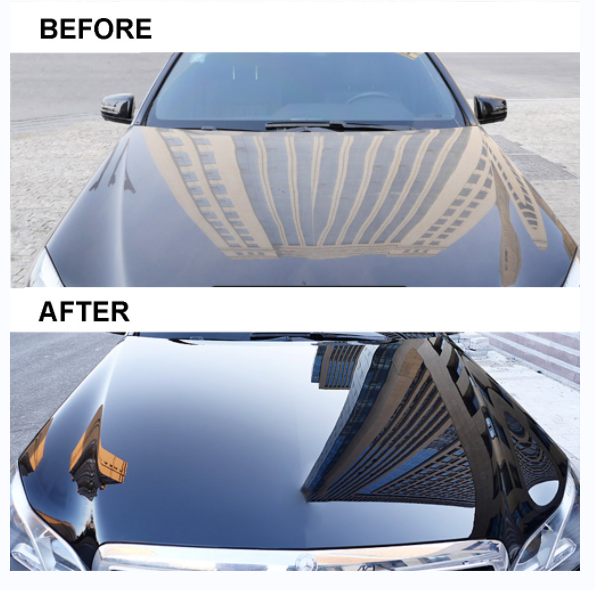Get premium car detailing for a deep clean.
Get premium car detailing for a deep clean.
Blog Article
A Comprehensive Guide to the Sorts Of Ceramic Coating on the Market
Ceramic layers have actually become a critical option throughout various industries as a result of their one-of-a-kind properties and applications. From silica-based formulations recognized for their robustness to crossbreed choices that combine multiple advantages, the selections readily available can be frustrating. Comprehending the nuances of each kind, including their details benefits and suitable use instances, is crucial for making informed decisions. As we check out the distinct features and applications of these coatings, the effects for efficiency and durability become significantly obvious, raising questions concerning which kind might ideal fit your needs.
Comprehending Ceramic Coatings
Ceramic coatings are advanced safety solutions that have actually gained appeal in different industries, specifically in automobile and aerospace applications. These coverings are composed of a liquid polymer that, when healed, forms a long lasting, hydrophobic layer on the surface area of the substratum. This layer offers improved resistance to environmental impurities, UV radiation, and chemical direct exposure, thereby prolonging the life and aesthetic allure of the underlying product.
The fundamental element of ceramic coatings is silica, which contributes to their solidity and longevity. The application process normally involves surface preparation, application of the finish, and treating, which can be achieved via heat or UV light. Once treated, ceramic layers exhibit extraordinary bonding homes, allowing them to stick highly to a range of surface areas, including metals, plastics, and glass.
In addition to their protective attributes, ceramic finishings also use simplicity of upkeep. Their hydrophobic nature reduces the adherence of dirt and grime, making cleansing easier and much less frequent. Overall, the fostering of ceramic finishings stands for a considerable advancement in surface area security modern technology, supplying both useful and visual advantages across several fields.
Types of Ceramic Coatings
Various sorts of ceramic finishes are available, each developed to satisfy certain performance needs and applications - Paint Protection Film. One of the most common kinds include:
Silica-based Coatings: These layers mainly are composed of silicon dioxide and are known for their longevity and chemical resistance. They are widely utilized in automobile and industrial applications.
Titanium Dioxide Coatings: Renowned for their photocatalytic residential or commercial properties, titanium dioxide coatings are frequently used in environments where self-cleaning and antifungal residential or commercial properties are preferable, such as in building materials and automobile coatings.
Zirconia Coatings: Characterized by their high-temperature security and thermal resistance, zirconia finishings are made use of in applications such as turbine engines and high-performance automotive parts.
Alumina Coatings: Displaying outstanding solidity and thermal stability, alumina my company finishings are frequently used in wear-resistant applications, consisting of cutting tools and commercial machinery. - Auto Detailing
Crossbreed Coatings: Integrating the properties of different materials, crossbreed coverings provide improved efficiency characteristics, making them ideal for unique and demanding applications.
Each sort of ceramic coating offers distinct purposes, permitting users to pick one of the most suitable service based on certain ecological conditions and performance needs.
Benefits of Ceramic Coatings
Ceramic finishings, in certain, offer many benefits that make them progressively popular amongst suppliers and customers alike. These coatings are immune to scratches, chemicals, and UV rays, making sure that the underlying surface continues to be safeguarded over time.
Along with sturdiness, ceramic finishes provide exceptional hydrophobic homes, allowing for easy cleaning and upkeep. This water-repellent nature decreases the adherence of dirt, grime, and other pollutants, which can extend the aesthetic appeal and performance of the surface. Additionally, ceramic coverings can significantly boost thermal resistance, making them suitable for applications that sustain heats.

Application Process
When applying ceramic finishes, a careful method is vital to achieve optimum outcomes. The application procedure commonly starts with detailed surface preparation. This involves cleaning, sanitizing, and brightening the surface to remove all impurities, including dust, grease, and prior waxes or sealants. A clean surface guarantees appropriate adhesion of the layer.
Once the surface area is prepped, the next action is to apply the ceramic finish. The layer must be used in slim layers, as thicker applications can lead to uneven surfaces.
After application, the finishing calls for a specific curing time, commonly varying from a few hours to a complete day, depending upon the product. During this time around, it is vital to stay clear of direct exposure to moisture or impurities. A gentle buffing may be required after healing to enhance the gloss and get rid of any kind of high places. Following these steps vigilantly will take full advantage of the performance and longevity of the top article ceramic covering, supplying a long lasting protective layer for the surface.
Upkeep and Longevity
To make certain the long life and efficiency of a ceramic coating, regular maintenance is necessary. Ceramic finishes, understood for their durability and safety top qualities, call for certain care routines to maximize their life expectancy and efficiency.
In enhancement to regular washing, regular evaluations are important. Try to find signs of wear or damage, such as hydrophobic homes diminishing or surface area flaws. If required, a light gloss might be put on renew the finishing without removing it away.
Moreover, the application of a booster spray can improve the covering's hydrophobic impacts and recover its gloss. This is especially advantageous for coverings that have remained in usage for a prolonged duration. Inevitably, by sticking to these maintenance methods, one can substantially extend the life of a ceramic layer, ensuring that it remains to provide optimum defense against environmental factors and preserve the visual allure of the automobile.
Conclusion

Report this page